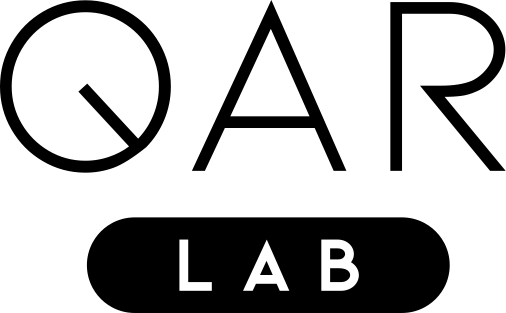Paper
Evidence that PUBO outperforms QUBO when solving continuous optimization problems with the QAOA
Jonas Stein, Farbod Chamanian, Maximilian Zorn, Jonas Nüßlein, Sebastian Zielinski, Michael Kölle, Claudia Linnhoff-Popien
Abstract
Applying QNLP to Sentiment Analysis in Finance
Jonas Stein, Ivo Christ, Nicolas Kraus, Maximilian Balthasar Mansky, Robert Müller, Claudia Linnhoff-Popien
Abstract
NISQ-Ready Community Detection Based on Separation-Node Identification
Jonas Stein, Dominik Ott, Jonas Nüßlein, David Bucher, Mirco Schönfeld, and Sebastian Feld
Abstract
Mathematics 2023, 11(15), 3323; https://doi.org/10.3390/math11153323
Approximative Lookup-Tables and Arbitrary Function Rotations for Facilitating NISQ-Implementations of the HHL and Beyond
Petros Stougiannidis, Jonas Stein, David Bucher, Sebastian Zielinski, Claudia Linnhoff-Popien, and Sebastian Feld
Abstract
Many promising applications of quantum computing with a provable speedup center around the HHL algorithm. Due to restrictions on the hardware and its significant demand on qubits and gates in known implementations, its execution is prohibitive on near-term quantum computers. Aiming to facilitate such NISQ-implementations, we propose a novel circuit approximation technique that enhances the arithmetic subrou-tines in the HHL, which resemble a particularly resource-demanding component in small-scale settings. For this, we provide a description of the algorithmic implementation of space-efficient rotations of polynomial functions that do not demand explicit arithmetic calculations inside the quantum circuit. We show how these types of circuits can be reduced in depth by providing a simple and powerful approximation technique. Moreover, we provide an algorithm that converts lookup-tables for arbitrary function rotations into a structure that allows an application of the approximation technique. This allows implementing approximate rotation circuits for many polynomial and non-polynomial functions. Experimental results obtained for realistic early-application dimensions show significant improve-ments compared to the state-of-the-art, yielding small circuits while achieving good approximations.
Published in: 2023 IEEE International Conference on Quantum Computing and Engineering (QCE)
Hybrid Quantum Machine Learning Assisted Classification of COVID-19 from Computed Tomography Scans
Leo Sünkel, Darya Martyniuk, Julia J. Reichwald, Andrei Morariu, Raja Havish Seggoju, Philipp Altmann
Abstract
Practical quantum computing (QC) is still in its in-fancy and problems considered are usually fairly small, especially in quantum machine learning when compared to its classical counterpart. Image processing applications in particular require models that are able to handle a large amount of features, and while classical approaches can easily tackle this, it is a major challenge and a cause for harsh restrictions in contemporary QC. In this paper, we apply a hybrid quantum machine learning approach to a practically relevant problem with real world-data. That is, we apply hybrid quantum transfer learning to an image processing task in the field of medical image processing. More specifically, we classify large CT-scans of the lung into COVID-19, CAP, or Normal. We discuss quantum image embedding as well as hybrid quantum machine learning and evaluate several approaches to quantum transfer learning with various quantum circuits and embedding techniques.
Influence of Different 3SAT-to-QUBO Transformations on the Solution Quality of Quantum Annealing: A Benchmark Study
Sebastian Zielinski, Jonas Nüßlein, Jonas Stein, Thomas Gabor, Claudia Linnhoff-Popien, Sebastian Feld
Abstract
To solve 3sat instances on quantum annealers they need to be transformed to an instance of Quadratic Unconstrained Binary Optimization (QUBO). When there are multiple transformations available, the question arises whether different transformations lead to differences in the obtained solution quality. Thus, in this paper we conduct an empirical benchmark study, in which we compare four structurally different QUBO transformations for the 3sat problem with regards to the solution quality on D-Wave’s Advantage_system4.1. We show that the choice of QUBO transformation can significantly impact the number of correct solutions the quantum annealer returns. Furthermore, we show that the size of a QUBO instance (i.e., the dimension of the QUBO matrix) is not a sufficient predictor for solution quality, as larger QUBO instances may produce better results than smaller QUBO instances for the same problem. We also empirically show that the number of different quadratic values of a QUBO instance, combined with their range, can significantly impact the solution quality.
Pattern QUBOs: Algorithmic Construction of 3SAT-to-QUBO Transformations
Sebastian Zielinski, Jonas Nüßlein, Jonas Stein, Thomas Gabor, Claudia Linnhoff-Popien, Sebastian Feld
Abstract
One way of solving 3sat instances on a quantum computer is to transform the 3sat instances into instances of Quadratic Unconstrained Binary Optimizations (QUBOs), which can be used as an input for the QAOA algorithm on quantum gate systems or as an input for quantum annealers. This mapping is performed by a 3sat-to-QUBO transformation. Recently, it has been shown that the choice of the 3sat-to-QUBO transformation can significantly impact the solution quality of quantum annealing. It has been shown that the solution quality can vary up to an order of magnitude difference in the number of correct solutions received, depending solely on the 3sat-to-QUBO transformation. An open question is: what causes these differences in the solution quality when solving 3sat-instances with different 3sat-to-QUBO transformations? To be able to conduct meaningful studies that assess the reasons for the differences in the performance, a larger number of different 3sat-to-QUBO transformations would be needed. However, currently, there are only a few known 3sat-to-QUBO transformations, and all of them were created manually by experts, who used time and clever reasoning to create these transformations. In this paper, we will solve this problem by proposing an algorithmic method that is able to create thousands of new and different 3sat-to-QUBO transformations, and thus enables researchers to systematically study the reasons for the significant difference in the performance of different 3sat-to-QUBO transformations. Our algorithmic method is an exhaustive search procedure that exploits properties of 4×4
dimensional pattern QUBOs, a concept which has been used implicitly in the creation of 3sat-to-QUBO transformations before, but was never described explicitly. We will thus also formally and explicitly introduce the concept of pattern QUBOs in this paper.
Algorithmic QUBO formulations for k-SAT and hamiltonian cycles
Jonas Nüßlein, Thomas Gabor, Claudia Linnhoff-Popien, Sebastian Feld
Abstract
Quadratic Unconstrained Binary Optimization (QUBO) can be seen as a generic language for optimization problems. QUBOs attract particular attention since they can be solved with quantum hardware, like quantum annealers or quantum gate computers running QAOA. In this paper, we present two novel QUBO formulations for k-SAT and Hamiltonian Cycles that scale significantly better than existing approaches. For k-SAT we reduce the growth of the QUBO matrix from O(k) to O(log(k)). For Hamiltonian Cycles the matrix no longer grows quadratically in the number of nodes, as currently, but linearly in the number of edges and logarithmically in the number of nodes.
We present these two formulations not as mathematical expressions, as most QUBO formulations are, but as meta-algorithms that facilitate the design of more complex QUBO formulations and allow easy reuse in larger and more complex QUBO formulations.
Towards Multi-Agent Reinforcement Learning using Quantum Boltzmann Machines
Tobias Müller, Christoph Roch, Kyrill Schmid, Philipp Altmann
Abstract
Reinforcement learning has driven impressive advances in machine learning. Simultaneously, quantum-enhanced machine learning algorithms using quantum annealing underlie heavy developments. Recently, a multi-agent reinforcement learning (MARL) architecture combining both paradigms has been proposed. This novel algorithm, which utilizes Quantum Boltzmann Machines (QBMs) for Q-value approximation has outperformed regular deep reinforcement learning in terms of time-steps needed to converge. However, this algorithm was restricted to single-agent and small 2×2 multi-agent grid domains. In this work, we propose an extension to the original concept in order to solve more challenging problems. Similar to classic DQNs, we add an experience replay buffer and use different networks for approximating the target and policy values. The experimental results show that learning becomes more stable and enables agents to find optimal policies in grid-domains with higher complexity. Additionally, we assess how parameter sharing influences the agents behavior in multi-agent domains. Quantum sampling proves to be a promising method for reinforcement learning tasks, but is currently limited by the QPU size and therefore by the size of the input and Boltzmann machine.

